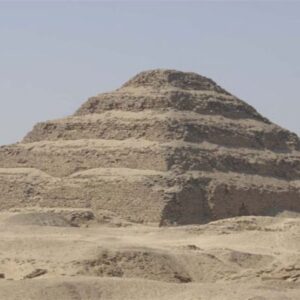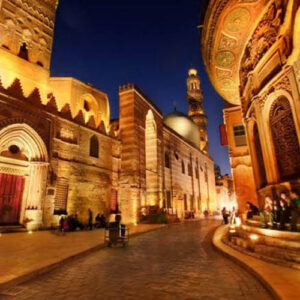-
Birqash Camel market Tour
$60Cairo, Giza Egypt 5+ Hours Explore The village of Birqash is known for its Camel market where they sell camels coming from Sudan.
-
Cairo Highlights Tour: Giza Pyramids, Sphinx, Egyptian Museum, Citadel of Saladin, Khan El Khalili Tour in Cairo
$55Cairo, Egypt 7+ Hours The three Giza Pyramids – The majestic Sphinx – The Egyptian Museum – The Citadel of Saladin – Khan El Khalili Market.
-
Dahshur Pyramids, Memphis and Saqqara in Giza
$60Cairo, Egypt 7+ Hours The three Giza Pyramids – The majestic Sphinx – Dahshur and Saqqara Pyramids & Tombs.
-
Egypt Pyramids Tour – Giza – Saqqara – Dahshur
$60Cairo, Egypt 7 Hours The three Giza Pyramids – The majestic Sphinx – Dahshur Pyramids – The Red Pyramid – The Bent Pyramid – The Step Pyramid of Sakkara.
-
Egypt Safari: Al Fayoum Day Tour to Wadi Al Rayan and Wadi Hitan
$70Cairo,Alexandria, Giza Egypt 10+ Hours
Safari Tour in Al Fayoum Oasis to see Wadi Al Rayan and Wadi Hitan. -
Egypt Safari: Bahariya Oasis Safari Trip from Cairo
$90Cairo, Giza Egypt 10+ Hours Explore Bahariya oasis, the Black Desert, the crystal mountain, the valley of Aqabat, and the White Desert.
-
Egypt Safari: Overnight in Bahariya Oasis 2 Days
Cairo, Giza Egypt 2 Days Explore Bahariya oasis, the Black Desert, the crystal mountain, the valley of Aqabat, and the White Desert.
-
Egypt Shore Excursions: Giza Pyramids, Sphinx, Egyptian Museum, Citadel of Saladin, Khan El Khalili Tour in Cairo
Cairo, Egypt 10+ Hours
The Giza pyramid complex & The Sphinx – The Egyptian Museum – The Citadel of Saladin – Mosque of Mohamed Ali, Khan El Khalili Market. -
Egyptian Museum Tour in Cairo
$50Cairo, Egypt 4 Hours Egyptian Museum, The famous museum houses the world’s largest collection of ancient Egyptian artifacts.
-
Egyptian Museum, Hanging Church, Abou Serga Church, Ben Ezra Synagogue, Khan ElKalili bazaars
$45Cairo, Egypt 7+ Hours Egyptian Museum, Hanging Church, Abou Serga Church, Ben Ezra Synagogue, Khan ElKalili bazaars.
-
El Alamein Tour from Cairo or Alexandria – The World War II City in Egypt
Cairo, Giza, Alexandria,El Alamein Egypt 7+ Hours El Alamein over-day visiting the Military Museum, World War II Commonwealth, Italian and German Cemeteries.
-
Gayer Anderson Museum and Ibn Toloun Mosque Tour in Cairo
Cairo, Egypt 4 Hours Gayer Anderson Museum and Ibn Toloun Mosque Tour in Cairo
-
Giza Pyramids Sound and Light Show Tour
$40Cairo, Egypt 3 Hours The three Giza Pyramids – The majestic Sphinx Sound and Light Show.
-
Giza pyramids, Sphinx & Camel Ride in Giza
$40Cairo, Egypt 5 Hours The three Giza Pyramids – The majestic Sphinx – Camel ride
-
Giza pyramids, Sphinx & Horse Carriage Ride Tour
$40Cairo, Egypt 5 Hours The three Giza Pyramids – The majestic Sphinx – a Horse carriage ride.
-
Giza Pyramids, Sphinx, Memphis and Saqqara in Giza
$45Cairo, Egypt 7+ Hours The three Giza Pyramids – The majestic Sphinx – Saqqara Pyramids & Tombs – Memphis Open Air Museum.
-
Giza pyramids, Valley temple & Sphinx
$40Cairo, Egypt 5 Hours The three Giza Pyramids – The majestic Sphinx.
-
Grand Egyptian Museum & Giza Pyramids Tour
Cairo, Egypt 5+ Hours Explore our Tour to the Grand Egyptian Museum & Pyramids Tour. Check off Cairo’s most important ancient Egyptian sites in a day with a qualified Egyptologist guide.
-
Islamic Cairo Highlights: Al Muizz Street & El Fishawi Cafe Tour in Cairo
$25Cairo, Egypt 5 Hours Check off The street of Al Muizz stretches from Bab Al-Futuh in the north to Bab Zuweila in the south. Visit Al-Hakim Mosque, Islamic houses, Cairo old gates, Go to Khan El Khalili’s open market area. Then have a seat in El Fishawy coffee shop, one of the traditional Cafes in the area.
-
Mount Sinai and St Catherine’s Monastery Overnight Tour from Cairo or Sharm El Sheikh
Sharm el Sheikh, Cairo, Giza Egypt 16+ Hours
follow in Moses’ legendary footsteps as he ascended Mount Sinai to receive the 10 commandments & explore St. Catherine’s Monastery & the Burning Bush. -
National Museum of Egyptian Civilization & Coptic Cairo Tour
$45Cairo, Egypt 5+ Hours Egyptian Civilization Museum with Expert Egyptologist Tour Guides, Cairo Old Cairo with Its Historical sites such as the Hanging Church, Ben Ezra, then Saints Sergius, and Bacchus Church (Abu Serga) then Khan el Khalili bazaars.
Customize your Trip
Egypt Elegant Tours Team is keen to help you planning your tour in Egypt.
Egypt Tours Destinations
- Egypt - 15 Zayed City, 11th District, Giza .
- +2 0100 5611 467
- info@egypteleganttours.com
Click Your Destination Name
Cairo Tours | Sharm El Sheikh Tours | Luxor Tours | Aswan Tours | Ain El Sokhna Tours | Alexandria Tours | Hurghada Tours | Giza Tours | Marsa Alam Tours |
Click Your Desired Article Category to read
Egyptian Food Articles | Egypt Pyramids Articles | Egyptian Temples Articles | Ancient Egyptian Religion | Egyptian Mosques Churches & Synagogues | Egyptian Traditions and Customs | Egypt Travel Advice | Egyptian History





















